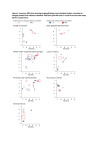Is MRI better than CT for detecting a vascular component to dementia? A systematic review and meta-analysis
- PMID: 22672344
- PMCID: PMC3403932
- DOI: 10.1186/1471-2377-12-33
Is MRI better than CT for detecting a vascular component to dementia? A systematic review and meta-analysis
Abstract
Background: Identification of causes of dementia soon after symptom onset is important, because appropriate treatment of some causes of dementia can slow or halt its progression or enable symptomatic treatment where appropriate. The accuracy of MRI and CT, and whether MRI is superior to CT, in detecting a vascular component to dementia in autopsy confirmed and clinical cohorts of patients with VaD, combined AD and VaD ("mixed dementia"), and AD remain unclear. We conducted a systematic review and meta-analysis to investigate this question.
Methods: We searched eight databases and screened reference lists to identify studies addressing the review question. We assessed study quality using QUADAS. We estimated summary diagnostic accuracy according to imaging finding, and ratios of diagnostic odds ratios (RDORs) for MRI versus CT and high versus low risk of bias.
Results: We included 7 autopsy and 31 non-autopsy studies. There was little evidence that selective patient enrolment and risk of incorporation bias impacted on diagnostic accuracy (p = 0.12 to 0.95). The most widely reported imaging finding was white matter hyperintensities. For CT (11 studies) summary sensitivity and specificity were 71% (95% CI 53%-85%) and 55% (44%-66%). Corresponding figures for MRI (6 studies) were 95% (87%-98%) and 26% (12%-50%). General infarcts was the most specific imaging finding on MRI (96%; 95% CI 94%-97%) and CT (96%; 93%-98%). However, sensitivity was low for both MRI (53%; 36%-70%) and CT (52%; 22% to 80%). No imaging finding had consistently high sensitivity. Based on non-autopsy studies, MRI was more accurate than CT for six of seven imaging findings, but confidence intervals were wide.
Conclusion: There is insufficient evidence to suggest that MRI is superior to CT with respect to identifying cerebrovascular changes in autopsy-confirmed and clinical cohorts of VaD, AD, and 'mixed dementia'.
Figures



Similar articles
-
Signs and symptoms to determine if a patient presenting in primary care or hospital outpatient settings has COVID-19.Cochrane Database Syst Rev. 2022 May 20;5(5):CD013665. doi: 10.1002/14651858.CD013665.pub3. Cochrane Database Syst Rev. 2022. PMID: 35593186 Free PMC article.
-
Clinical judgement by primary care physicians for the diagnosis of all-cause dementia or cognitive impairment in symptomatic people.Cochrane Database Syst Rev. 2022 Jun 16;6(6):CD012558. doi: 10.1002/14651858.CD012558.pub2. Cochrane Database Syst Rev. 2022. PMID: 35709018 Free PMC article.
-
Thoracic imaging tests for the diagnosis of COVID-19.Cochrane Database Syst Rev. 2022 May 16;5(5):CD013639. doi: 10.1002/14651858.CD013639.pub5. Cochrane Database Syst Rev. 2022. PMID: 35575286 Free PMC article.
-
Pharmacotherapies for sleep disturbances in dementia.Cochrane Database Syst Rev. 2016 Nov 16;11(11):CD009178. doi: 10.1002/14651858.CD009178.pub3. Cochrane Database Syst Rev. 2016. Update in: Cochrane Database Syst Rev. 2020 Nov 15;11:CD009178. doi: 10.1002/14651858.CD009178.pub4. PMID: 27851868 Free PMC article. Updated.
-
MRI software and cognitive fusion biopsies in people with suspected prostate cancer: a systematic review, network meta-analysis and cost-effectiveness analysis.Health Technol Assess. 2024 Oct;28(61):1-310. doi: 10.3310/PLFG4210. Health Technol Assess. 2024. PMID: 39367754 Free PMC article.
Cited by
-
The appropriate use of neuroimaging in the diagnostic work-up of dementia: an economic literature review and cost-effectiveness analysis.Ont Health Technol Assess Ser. 2014 Feb 1;14(2):1-67. eCollection 2014. Ont Health Technol Assess Ser. 2014. PMID: 24592297 Free PMC article. Review.
-
Structural Brain Magnetic Resonance Imaging to Rule Out Comorbid Pathology in the Assessment of Alzheimer's Disease Dementia: Findings from the Ontario Neurodegenerative Disease Research Initiative (ONDRI) Study and Clinical Trials Over the Past 10 Years.J Alzheimers Dis. 2020;74(3):747-757. doi: 10.3233/JAD-191097. J Alzheimers Dis. 2020. PMID: 32116253 Free PMC article.
-
The appropriate use of neuroimaging in the diagnostic work-up of dementia: an evidence-based analysis.Ont Health Technol Assess Ser. 2014 Feb 1;14(1):1-64. eCollection 2014. Ont Health Technol Assess Ser. 2014. PMID: 24592296 Free PMC article. Review.
-
Validity of the QUADAS-2 in Assessing Risk of Bias in Alzheimer's Disease Diagnostic Accuracy Studies.Front Psychiatry. 2018 May 25;9:221. doi: 10.3389/fpsyt.2018.00221. eCollection 2018. Front Psychiatry. 2018. PMID: 29887812 Free PMC article.
-
Calcium supplementation and risk of dementia in women with cerebrovascular disease.Neurology. 2016 Oct 18;87(16):1674-1680. doi: 10.1212/WNL.0000000000003111. Epub 2016 Aug 17. Neurology. 2016. PMID: 27534711 Free PMC article.
References
-
- Alzheimer’s Association. 2011 Alzheimer’s Disease Facts and Figures. 2011. http://www.alz.org/downloads/Facts_Figures_2011.pdf. - PubMed
Publication types
MeSH terms
Grants and funding
LinkOut - more resources
Full Text Sources
Medical

